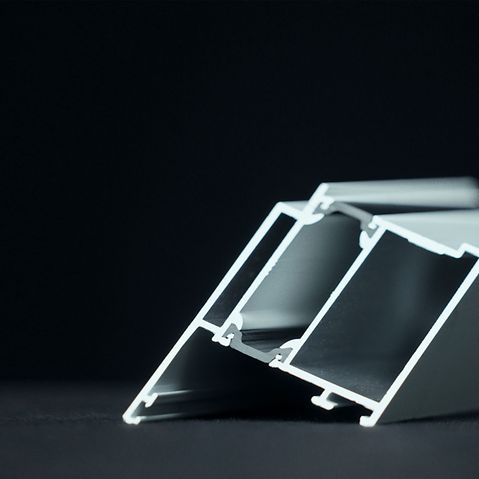
Along with choosing the best possible façade construction and a suitable façade system, using CO₂-optimised materials also has a significant impact on the carbon footprint of a building.
Hybrid constructions such as combining timber and aluminium as an extension structure can also help reduce the carbon footprint. However, when choosing a suitable material with the least possible carbon footprint, you must check if the material is right for the specific building requirements and whether it can fulfil its function.
An overview of CO₂-efficient materials
Low carbon aluminium and ultra-low carbon aluminium
Aluminium is an ideally suitable material for reducing embodied emissions. The sustainable material and recyclate can be recycled endlessly and boast low CO₂ emissions, even when reused multiple times.
Special aluminium grades in particular can reduce the carbon footprint of a building as early as the construction stage. The Schüco low carbon and ultra-low carbon aluminium grades contain far less embodied carbon than traditional aluminium types, thanks to the use of recycled aluminium and of green electricity during manufacturing, among other things.
Embodied carbon means the carbon emissions in a material that are created during production of the units. The EPD for profiles made from Schüco low carbon aluminium reports a value of less than 4.47 kg CO₂e/kg and the value for Schüco ultra-low carbon profiles is even below 2.27 kg CO₂e/kg.
Cradle to Cradle-certified systems
Cradle to Cradle-certified systems make a decisive contribution to the reuse of aluminium. The materials are separated and the recyclable material is shredded and melted down before reuse. This means windows and doors at the end of their useful life can be fed back into the A/U/F loop (Aluminium und Umwelt im Fenster- und Fassadenbau – aluminium and the environment in window and façade construction), reducing the need for newly manufactured aluminium for façade constructions.
With 76 currently certified systems, Schüco is one of the Cradle to Cradle pioneers in the building sector. Schüco is also committed to a sustainable aluminium industry and creating binding sustainability standards. As a reward for this commitment, Schüco is one of the first companies in the building sector to be certified in accordance with the internationally recognised Chain of Custody Standard by the Aluminium Stewardship Initiative (ASI).